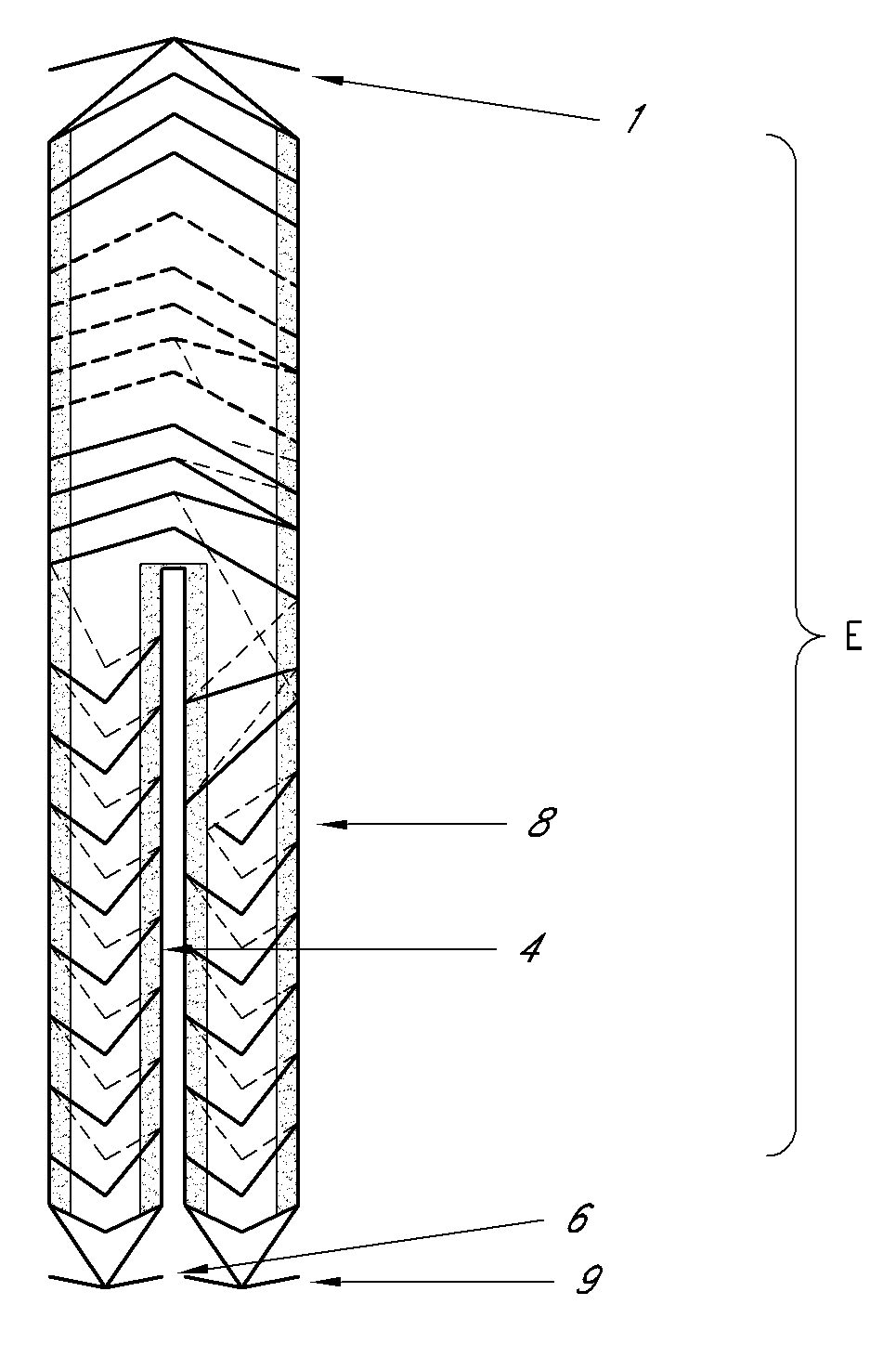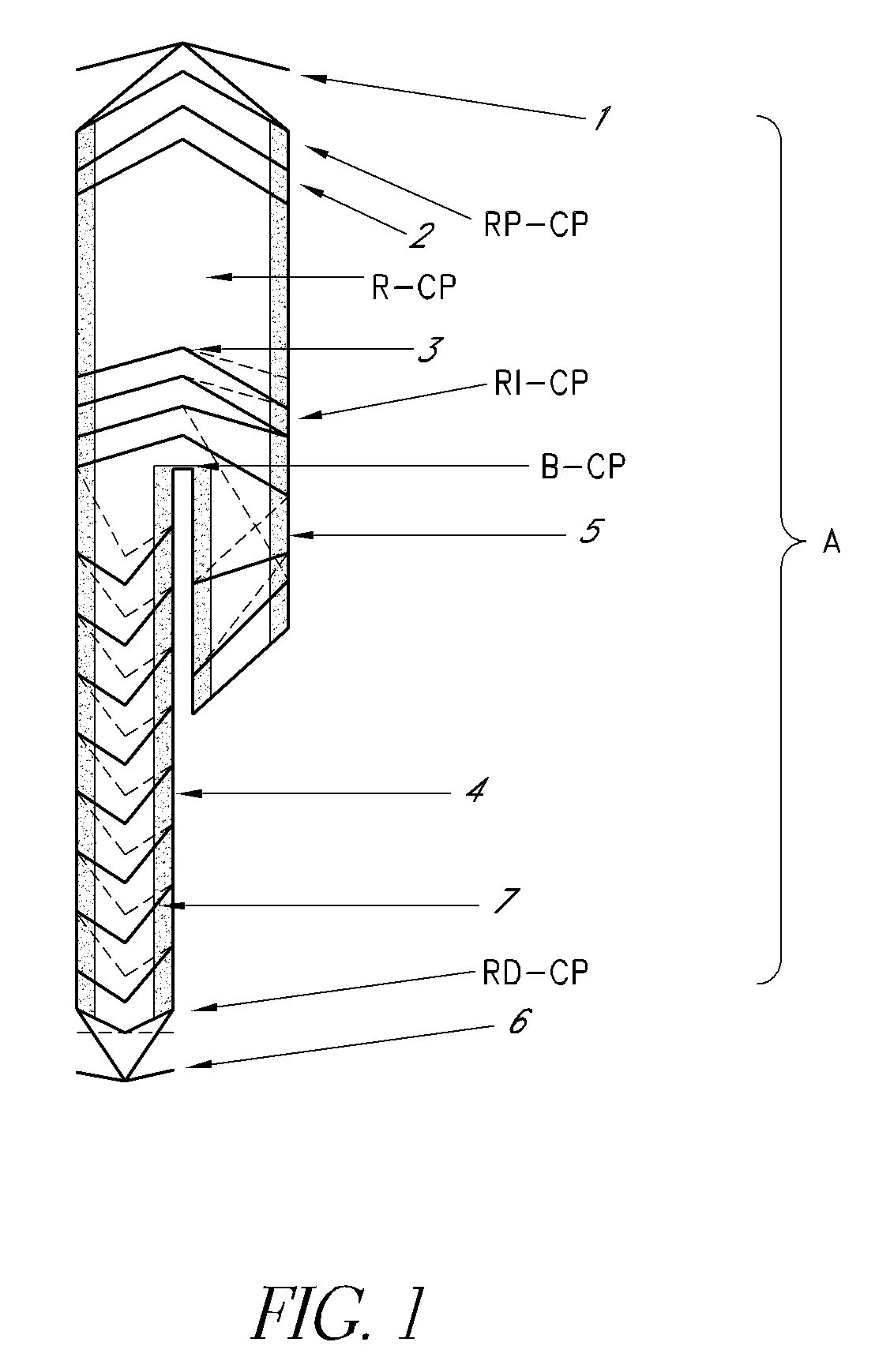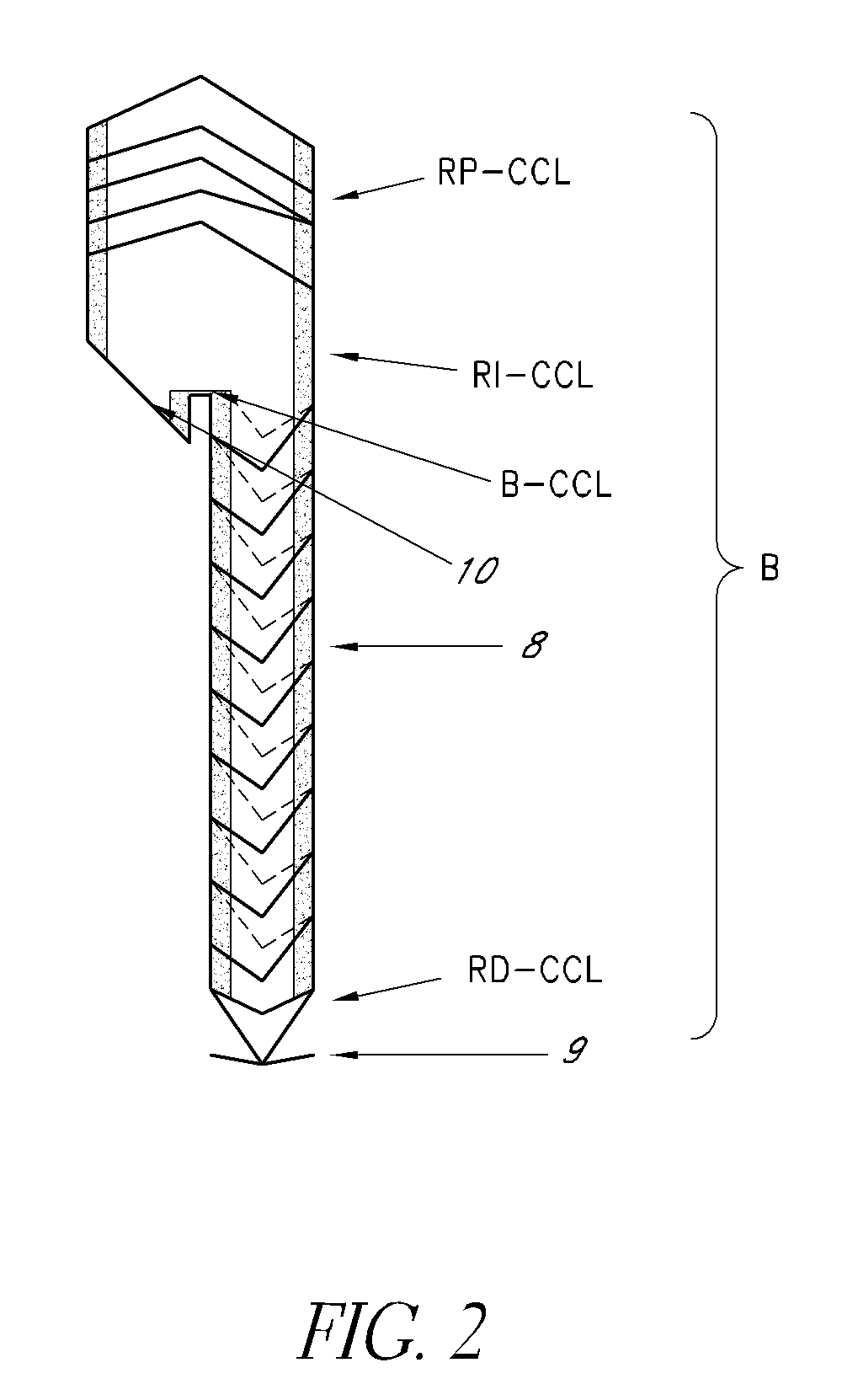Endoprosthesis and delivery system for its placement within a patients vessel and uses for this endoprosthesis and delivery system
a technology of endoprosthesis and patient vessel, which is applied in the field of endoprosthesis and delivery system, can solve the problems of mass hemorrhage, rupture of aneurysm, loss of blood,
- Summary
- Abstract
- Description
- Claims
- Application Information
AI Technical Summary
Benefits of technology
Problems solved by technology
Method used
Image
Examples
second embodiment
[0046]the present invention relates to a delivery system for delivering the endoprosthesis of the present invention to the intended place of implant within a vessel conveying biological fluids (e.g. blood) in a patient.
[0047]FIG. 4 shows the delivery system (S) for both bodies “A” and “B”, comprising a catheter with a distal and proximal endoprosthesis attachment device. This allows complete controle on the part of the surgeon when implanting the device. The delivery system (S) of the present invention comprises the following mechanisms for conveying, positioning, fine adjustment and attachment of the endoprosthesis (E) of the present invention: (a) proximal (S1) and distal supports (S2), (b) external sheath (S3), (c) proximal (S4) and distal cones (S5), (d) distal stent trigger (S6) and (e) proximal stent trigger (S7).
[0048]The proximal support (S1) is connected to the external sheath (S3) by the means of attachment of the latter, such as, for example, a flange. This configuration ...
third embodiment
[0051]The operation of the delivery system (S) of the present invention comprses the following consecutive steps: (i) loading and attaching the endoprosthesis (E) by means of the proximal (S4) and distal cones (S5), that are in turn connected to their respective proximal (S7) and distal (S6) free stent triggers. The endoprosthesis (E) is attached at both its proximal and distal extremities which allows any necessary correction in the case of innaccurate positioning during the release of the said endoprosthesis (E) or during the critical stages of the surgical procedures. the invention relates to the use of the delivery system for implanting an endoprosthesis (E) in a patient requiring such treatment. The procedure for use may be described in the following manner:[0052]the endoprosthesis (E) of the present invention is first loaded in the delivery system (S) of the present invention and connected to the proximal (S4) and distal cones (S5);[0053]once the delivery system loaded with th...
PUM
 Login to View More
Login to View More Abstract
Description
Claims
Application Information
 Login to View More
Login to View More - R&D
- Intellectual Property
- Life Sciences
- Materials
- Tech Scout
- Unparalleled Data Quality
- Higher Quality Content
- 60% Fewer Hallucinations
Browse by: Latest US Patents, China's latest patents, Technical Efficacy Thesaurus, Application Domain, Technology Topic, Popular Technical Reports.
© 2025 PatSnap. All rights reserved.Legal|Privacy policy|Modern Slavery Act Transparency Statement|Sitemap|About US| Contact US: help@patsnap.com



